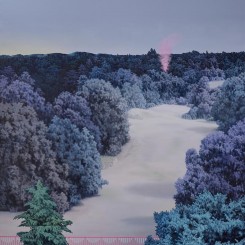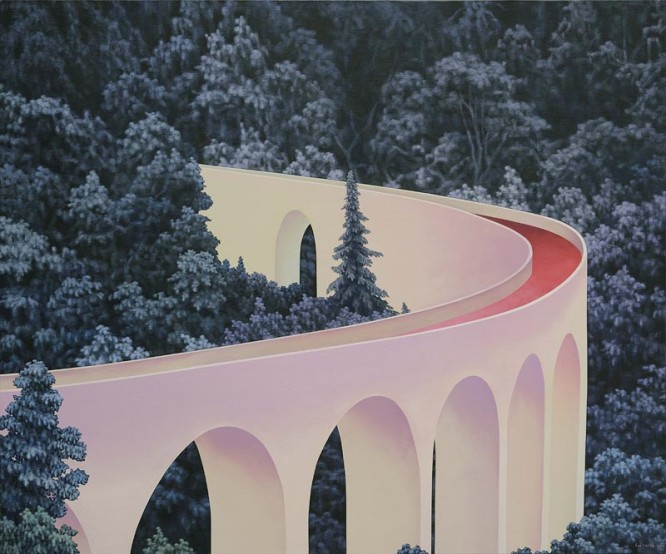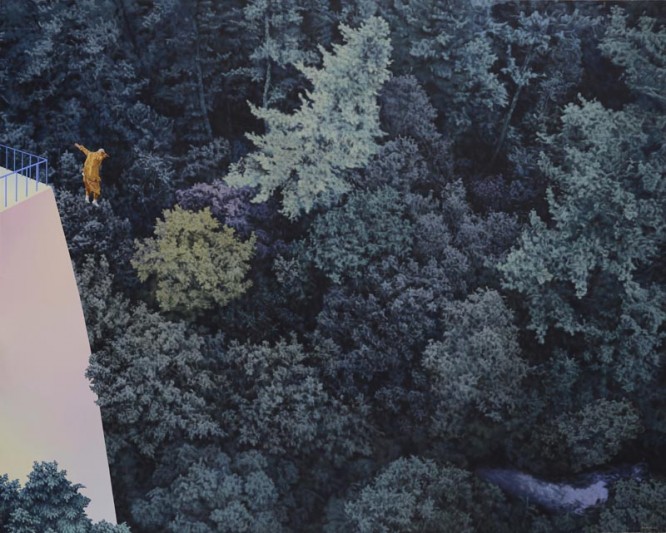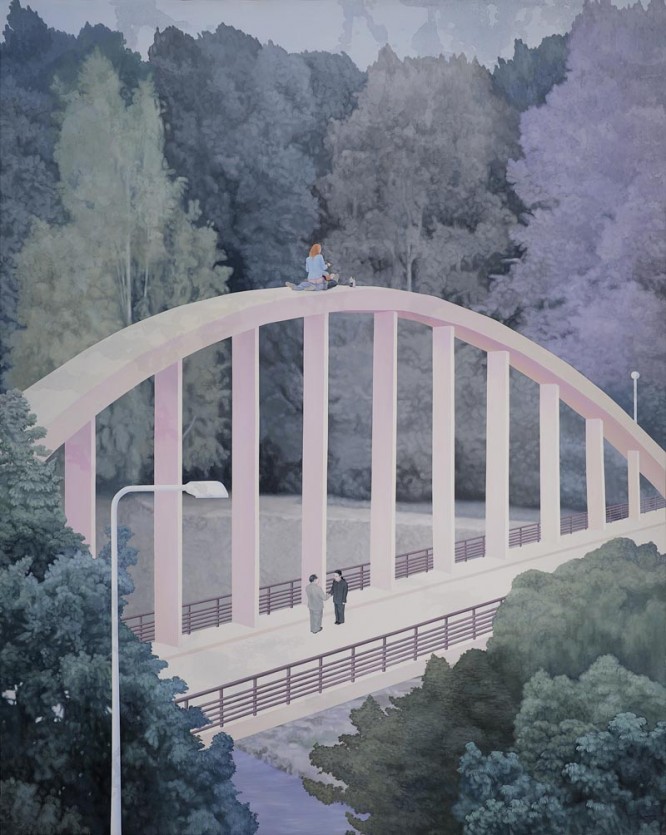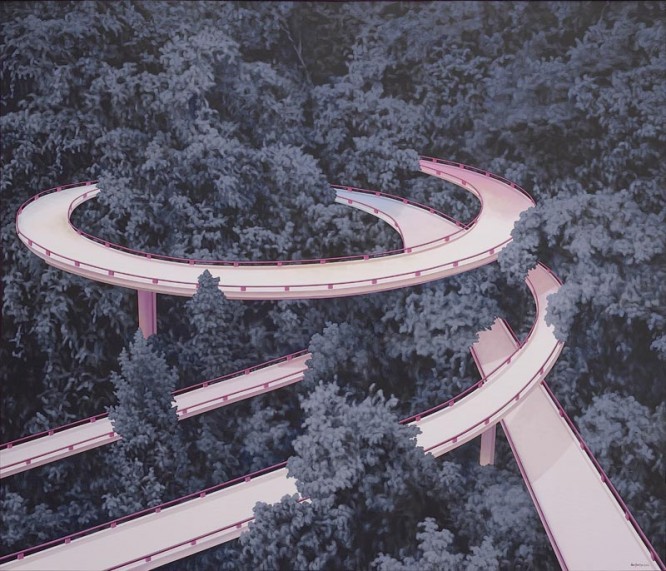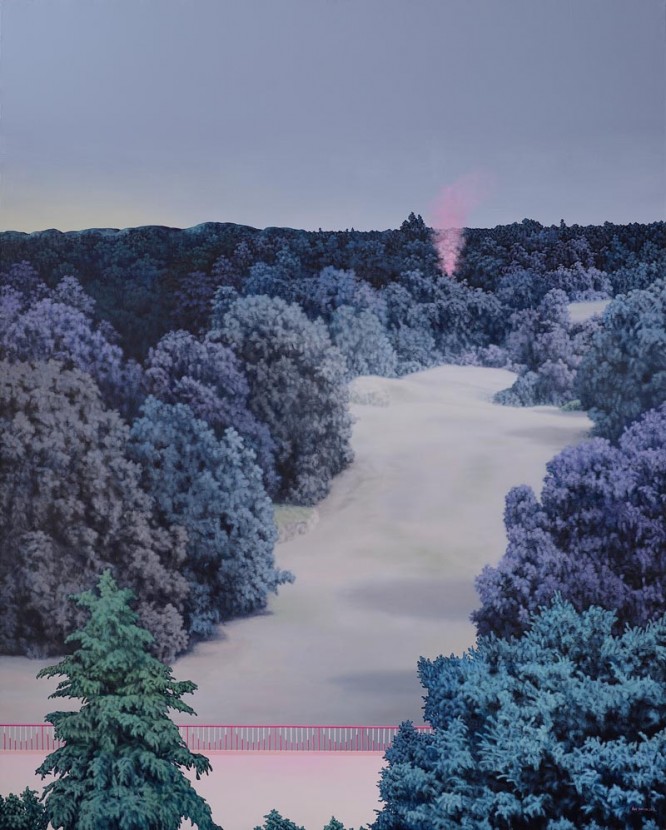“Powers in the Jungle,” Han Jianyu Solo Exhibition
Space Station (4 Jiuxianqiao Rd, 798 Art Zone, Chaoyang District, Beijing) Jun 22–Jul 16, 2013
If someone were to describe simply these paintings by Han Jianyu, the listener’s first thought would not be of politics. Deep banks of invariant blue-green trees fill the frame or meet crisply with a high, pale horizon tinted with an iridescence that could have been extracted from the foliage. All the paintings contain a man-made conduit, raised from the ground into the canopy and painted in a creamy near-pink — a foot bridge, a viaduct or spiraling road flyover, all pristine and unused. But in the center of the gallery is a huge iron cage, and inside this a plastic chair; it faces a painting hanging inside the cage of this same arrangement — cage and chair — but in the background is a great mass of the trees, always these trees. They have such a particular character — unnatural, somehow, almost schematic; conveying a sense of obedience, but also disappearance or concealment.
Thus do the attributes of these works begin to converge on a sense of duress or menace that is defiantly political. Figures do feature sometimes; in “The Lugou Bridge Incident” [i.e. the Marco Polo Bridge Incident] (2011), a couple are picnicking atop the arch of a road bridge as what looks like the bodies of Mao and the artist shake hands below; in “Monk” (2012), an orange-robed man is seen jumping off, arms raised, into the oblivion of trees. The titles, too, echo this eerie character — “The Lugou Bridge Incident,” “Truth” (2012), “Boundary” (2012) and “An Accident Gradually Forgotten by People” (2011). All appear as disaffected actors whose actions are nonetheless invested with a sense of foreboding and universality. It is an aesthetic all the artist’s own — Han is apparently fixated with political relationships, patterns and publicity — yet it remains an interpretation of conditions which are also ours. These verdant, seething compositions finally transport our sensibilities into scenography which, in its turn, has a system and an architecture.
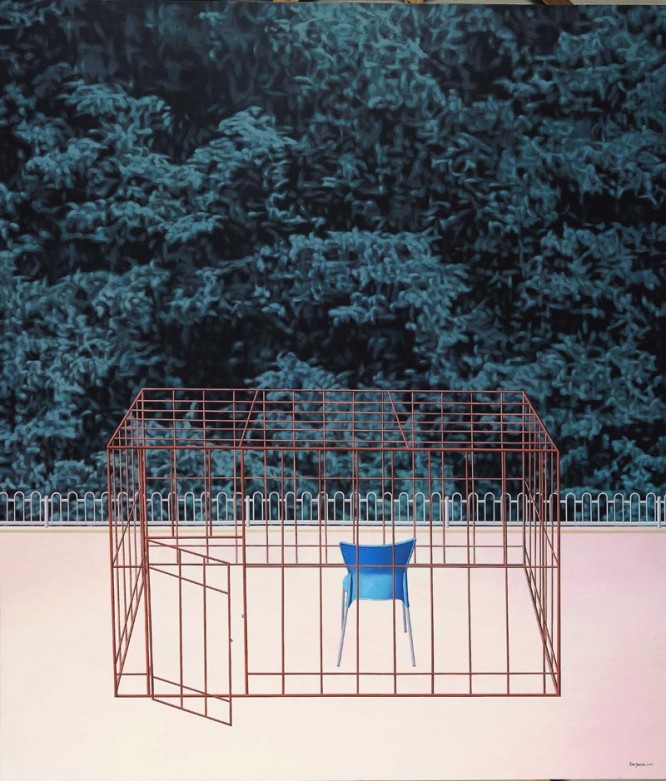
Han Jianyu, “The First Rubber Chair,” oil, acrylic on canvas, 210 x 180 cm, 2011
韩建宇,《第一把“胶”椅》,布面油画、丙烯,210 x 180 cm, 2011
